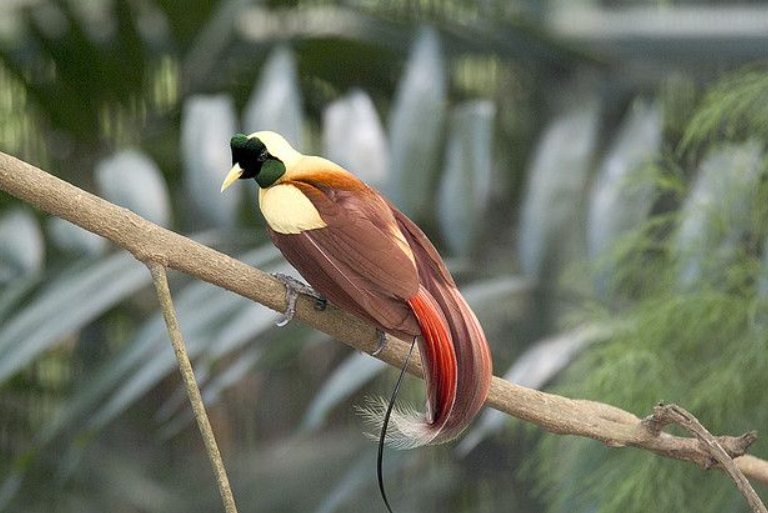PapuaAround.com – Every province in Indonesia boasts its own flora and fauna symbols, including West Papua Province. These represent not only symbols but also reflect the diversity and biological richness of their respective regions.
For West Papua Province, the Matoa tree (Pometia pinnata) and the Red Bird of Paradise (Paradisaea rubra) are the iconic flora and fauna.
Matoa Tree: West Papua’s Flora Symbol
The Matoa tree, scientifically known as Pometia pinnata, serves as West Papua’s flora symbol. In Papua, there are two types of Matoa: Matoa Kelapa and Matoa Papeda, distinguished by the texture of their fruit flesh. Matoa Kelapa has fruit flesh that is firm like Aceh rambutan, while Matoa Papeda has somewhat soft and sticky fruit flesh.
This tree thrives in lowland areas up to around 1200 meters above sea level, with dry soil conditions and a thick soil layer. It requires a climate with high rainfall, exceeding 1200 mm per year, to grow well. Matoa trees can grow very large, reaching an average height of 18 meters and a trunk diameter of up to 100 cm. Typically, the Matoa tree bears fruit once a year, flowering from July to October and fruiting three to four months later.
Red Bird of Paradise: Exotic Fauna of West Papua
The Red Bird of Paradise, scientifically known as Paradisaea rubra, is the fauna symbol of West Papua Province. This bird is found only in the eastern part of Indonesia, Papua New Guinea, and Australia. According to the West Papua Natural Resources Conservation Agency (BBSDA), the Bird of Paradise belongs to the Paradisaeidae family. There are 14 genera and around 43 species of Bird of Paradise, with approximately 33 species found in Papua. This makes Papua known as the “land of paradise” due to the abundance of Bird of Paradise species found there.
The Red Bird of Paradise is one of the more exotic types of Bird of Paradise. It has a distinctive black or brown body color, a yellow beak, a combination of emerald green and yellow on its neck, and a predominantly red tail. Additionally, its tail features two long black feather strands.
These birds prefer to group together on tall tree branches and are active during the daytime. One of their habitats is the West Waigeo Conservation Area in Raja Ampat Regency, West Papua Province. They are predominantly found in hill ridge habitats with sufficiently tall trees, around 25 meters high. Some of the tree species where these birds are active in their habitat include Manilkara trees (Manilkara fasciculata), Merbau trees (Intsia palembanica), Gaharu trees (Gyrinops sp), and Jambon trees (Eugenia sp).
The presence of the Matoa tree and the Red Bird of Paradise as symbols of West Papua Province underscores the importance of biodiversity conservation efforts in this region. Protecting the natural habitats of these flora and fauna is crucial not only for maintaining ecosystem sustainability but also for preserving the cultural identity and natural heritage of West Papua.
Therefore, it is essential for communities and the government to continue collaborating on conservation efforts and biodiversity education. Through these efforts, we can ensure that West Papua’s flora and fauna symbols remain icons of natural wealth and pride for future generations.
West Papua Province, with its iconic flora and fauna symbols—the Matoa tree and the Red Bird of Paradise—stands as a testament to Indonesia’s rich biodiversity. By increasing awareness and taking concrete actions, we can preserve this natural heritage for the future.
Read also: Constitutional Court Orders Recount of Votes in Sentani District
Source: BangunPapua.

